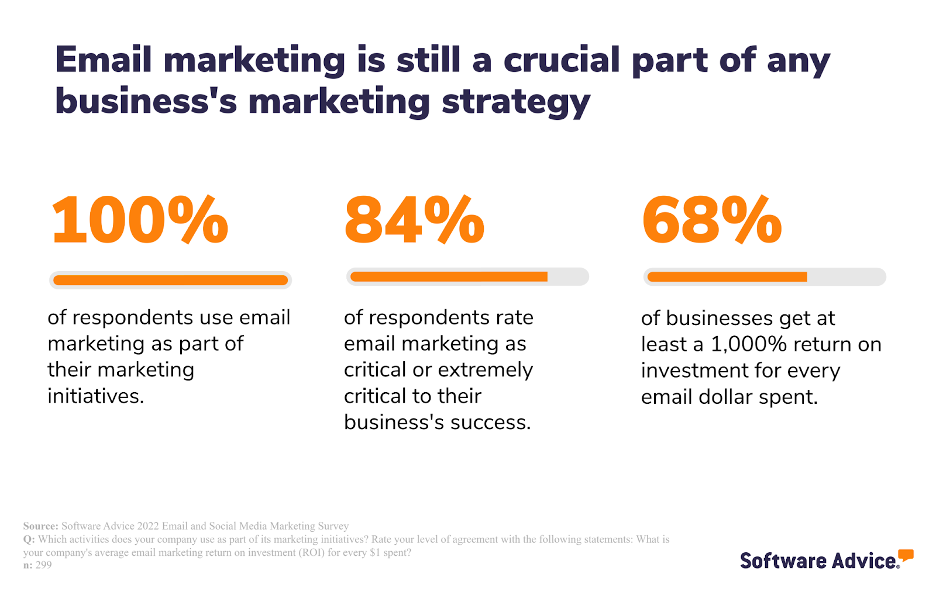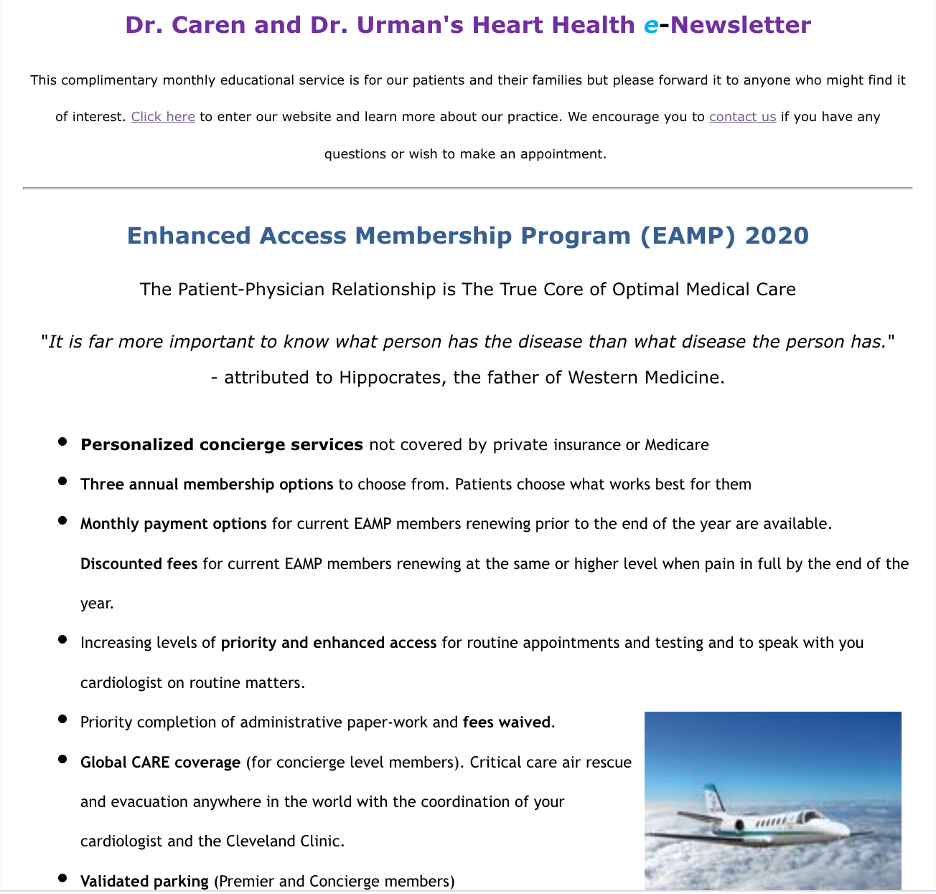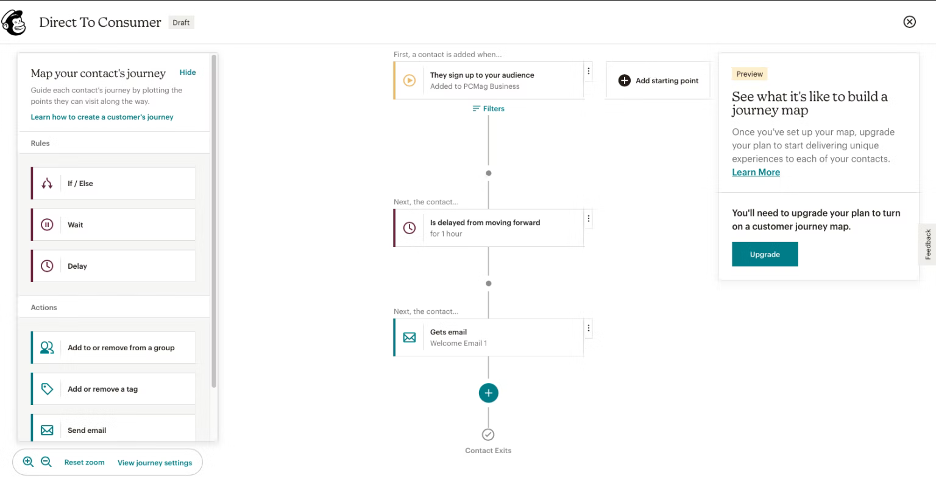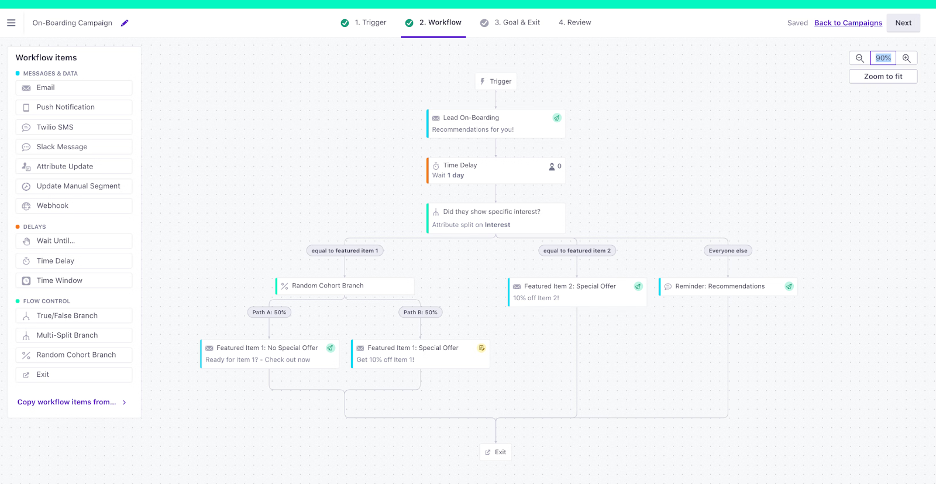How To Improve Your Healthcare Email Marketing
Small practice administrators in the healthcare industry who are seeking to improve their email marketing without knowing the nuances that go into creating a comprehensive healthcare email marketing strategy risk wasting time and resources.
As a healthcare organization, it’s vital to continuously optimize and improve your healthcare email marketing strategies. As a low-cost, low-effort marketing tool, using email effectively will boost your ROI, grow your patient book, and increase referrals. By taking a more deliberate, hyper-focused approach to email marketing, healthcare organizations can grow their practice in an organic, maintainable, and consistent manner.
But if you’re a small healthcare practice administrator seeking to improve your email marketing, and you don’t know the nuances that go into creating a comprehensive email marketing strategy, you risk wasting valuable time and resources. We can help with that.
Informed by Gartner insights, we’ve compiled a list of the different email marketing strategies for healthcare professionals to adopt if they want to set up and improve their existing email program [1].
Why improve your email healthcare marketing program to begin with?
Email marketing has become the go-to marketing channel for a variety of industries for a good reason. It’s cheap, effective, and produces one of the highest return on investments across the board compared to other marketing channels. And the same goes for the healthcare industry. The 2022 Software Advice Email and Social Media Marketing Survey*, while not specifically about healthcare organizations, found some staggering statistics about email marketing.

You might see something like 1,000% ROI and balk, but the fact is that organizations see value in email marketing. To further our point that email marketing is valuable, according to our aforementioned survey, 10% of businesses increase their spending on email marketing year over year.
Reason #1: It’s a free or low-cost channel
If your marketing budget is tight, email marketing will get you more bang for your buck than nearly any other type of marketing. And it’s easy to start with this form of outreach because you already have their email addresses.
Take advantage of that by sending a personalized email, appointment reminders, or email newsletters that link to your website or social media pages so that you can collect valuable data and insights (patient portal usage, click-through rates into your site and social pages, etc.) as well as drive traffic to places where a patient can enroll and book appointments.
Aside from the time it takes to write healthcare emails and newsletters, this option is free. There are email marketing software solutions out there that can help make the process easier and more efficient, but if your budget is tight, it’s fine to do it manually at the start.
Reason #2: You fully own your email marketing
Compared to other marketing solutions, such as SEO optimization or social media marketing, you have complete control over your email marketing because you don’t have to rely on the changing landscape, algorithms, or other businesses to succeed.
When search engines change their algorithms, it means you also have to change how you optimize which takes time and effort and can lead to frustration. Additionally, there’s no guarantee that a certain social media platform will have the same advertising policies in the future.
Healthcare email marketing is much more static, which means it’s reliable, consistent, and won’t change. While certain marketing strategies might come and go, you can always rest assured that email marketing will remain a dependable source of marketing information for your practice.
Reason #3: Preferred customer communication channel
You might be hesitant to ramp up your email marketing because you’re worried about sending “spam” or overwhelming your patients with email content. It’s a valid concern. After all, we’re faced with a lot of communication these days from all angles.
The thing is, email is where patients expect to be contacted when it comes to email marketing opportunities.
That provides healthcare organizations with a unique opportunity. Because they’re being bombarded with email marketing from retail businesses, your email will stand out as more important and interesting which might mean more click-through traffic to your website.
Reason #4: High ROI
According to that same 2022 Software Advice Email and Social Media Marketing Survey [*], over one-third (34%) of businesses get 21% to 40% of their total business revenue from email alone. Additionally, 68% of respondents get at least a 1,000% ROI for every dollar spent, with a portion of those getting as high as 4,900% ROI.
That’s right. Four-thousand, nine hundred percent ROI. It’s a testament to the low-cost nature of email marketing and how important it is to improve your healthcare email marketing strategies.
So now, let’s dive into different ways to improve your healthcare email marketing strategy.
Determine if your existing healthcare email marketing tools and processes allow you to do your best
You might be tempted to upgrade to a more flashy system if you have pain points with your current tool. Before you do, you should evaluate the issues you have with your current system. Compare these pain points with the overall cost of potentially breaking a contract, spending time finding a new system, and training staff to use the new system.
Switching systems is costly and time consuming, so it’s important to know if it’s the right call or if you can address those pain points with the software provider directly to help make the system work better for your practice.Often, you can retrain you and your staff to better utilize the system you have in place.
Because every healthcare practice is different, it will take some time to find the email marketing strategy that works best for your practice. Ask for advice from your peers who might be more established and familiar with the ins and outs of healthcare email marketing. What worked for them? How did they execute it? What didn’t work?
Online forums and conventions are also great places to network and find like-minded professionals who have been through what you are struggling with.
To sum it up
Look at your email platform closely to determine its strengths and weaknesses. Look for gaps in functionality as well as places where you think the system does a great job. You might be surprised to find that any pain points might be a procedural issue or a misunderstanding about how best to utilize the tool, rather than an issue with the actual software itself.
Cultivate your subscriber list
Curating your email list is important because email clients such as Gmail, Apple Mail, and Outlook are growing increasingly smart about marking emails as spam if they are sent to too many inactive email addresses. You need to keep your email subscriber list clean as well as send engaging, relevant content to avoid going to the spam filter.
Not only can curating your email list help keep you out of the spam folder, but it can also save you money. Many email marketing software solutions don’t charge businesses if they have under a certain threshold of subscribers. Small practices can take advantage of that by keeping their email list in check.
To sum it up
It’s a best practice to go through your email subscriber list to clean out inactive or dead accounts. Doing this at least once a month ensures you’re sending your emails to real people who will be more likely to engage with your messaging.
Don’t view email marketing in a vacuum
All of your marketing strategies should be intertwined in order to get the most success. Your website should link to your social media pages which should link to your content blog which should link back to your website. All of these marketing channels should funnel down into one goal: attracting new patients and retaining old ones.
It’s important to have a clear, actionable, trackable goal in mind when executing your email marketing strategy. Otherwise, you’re wasting your time as well as your patients’ time.

An example of what an email newsletter might like for a healthcare practice [2]
If your goal is to increase conversions and get more new patients to enroll, you want to make sure the core of your email marketing program promotes clicks to your website’s enrollment form. If you want to focus on maintaining and nurturing existing patients to increase referrals, send them to your social media pages (as long as they are active), or focus on engaging health-related email newsletters that your patients will want to forward to their friends.
To sum it up
Analyze your overall marketing goals, and compare them to the goals you set for your email marketing. If your healthcare email marketing strategy doesn’t help you achieve that overall goal, you need to adjust it so that it does.
Always have a goal in mind with each email blast you send
You want to make sure that every email you send is intentional and working to accomplish a specific marketing goal that will help drive business to your healthcare organization. Before sending a mass email, check to make sure you’re utilizing a SMART goals approach.
Having a clear goal with measurable KPIs chosen to support it will increase performance, save time and money, and better support your overall goals as a practice.

Properly optimizing your healthcare email marketing strategy toward a specific goal means you can track performance and progress in a meaningful way. If your primary goal is increasing clicks to your website to grow your enrollment of new patients, there won’t be any confusion about whether or not you’re attaining that goal because you can easily measure it.
To sum it up
Choose one to two primary goals for your email marketing program, and begin tracking their progress. Once you’ve been tracking your performance for a while, look at the data to determine where you’re successful and where you’re falling short. This might mean you have to do some experimenting with different strategies before you find the right one that provides you with the best results.
Personalize your messaging to remain engaging
Whether it’s welcome emails, appointment reminders or confirmations, newsletters, patient education resources, promotions, or special offers, you need to have some level of personalization.
Sending too much content or sending content that isn’t relevant to your subscriber will mean they are more likely to unsubscribe from your email list. If you don’t personalize your messaging, you risk squandering the opportunity to get them to either enroll, refer your practice, or book another appointment.
Worse yet, without personalization, your patient might unsubscribe or opt out of receiving any healthcare emails related to marketing efforts.
You can accomplish this personalization more easily and efficiently with the use of look-alike audience targeting and automated personalization that’s offered by many email marketing software solutions. It’s no stretch that personalizing your messaging for a narrower audience will cause higher engagement.

To sum it up
Many email marketing software tools have look-alike audience targeting features and automated personalization that can help improve your messaging to individual patients while also allowing you to scale and grow.
Don’t rely solely on open rates for reporting
Open rates have traditionally been the number one way to measure email marketing success, but this isn’t the case anymore. Click-through-rates (CTR), deliverability, and conversions are metrics that are becoming more and more relevant because they tell a more complete story.
After clicking your email, you want your patient to take action, whether by visiting your website, booking an appointment, or going to your social media pages or review sites.
Mail platforms are also getting more intelligent at detecting spam before a patient even opens your marketing efforts to begin with. That’s why making sure a patient is receiving your healthcare emails in the first place is crucial to consider. To do this, you need to create a variety of engaging content.
Here are two different ways to mix things up and remain relevant and engaging for your patients:
Send newsletters that highlight new opportunities a patient can take advantage of like upcoming flu shot availability.
Send a link to your social media pages where a patient can watch an informative video. E.g., You could send a video that shows patients how to use their patient portals.
Put your primary CTA near the top of your message. If you want your patients to sign up for a new service you provide, make sure the link to that service is near the top of the email. If you want your patients to go to your social media pages, include the link early.
Make sure your schedule is achievable and sustainable
The last thing you want to do is burn yourself out by overcommitting to an unrealistic healthcare email marketing cadence. It’s easy and even tempting to bite off more than you can chew as a new practice, but it likely won’t be sustainable.
If you don’t think you can achieve weekly newsletters, do bi-weekly or even monthly. Your patients receive a ton of emails from marketers every day, so you want to make sure that you don’t send so many emails that they just automatically click the delete button before opening it up.

One of your first steps should be establishing a sustainable cadence for newsletters. Track how often important things or promotions are happening at your practice and build around that. If that means that it’s once a month, then send an email once a month. You can also use email marketing software to help you with automated scheduling and publishing to take some of the legwork out of the process.
Successful email marketing is doable for healthcare organizations
Email marketing is an important part of any marketing strategy because of its low-cost, high-ROI nature. Don’t fall into the trap of sending messages without a reason though because that might lead to the dreaded spam folder which also means you wasted your time and effort on something your patient won’t read.
Even with limited resources, you should be able to utilize the above tips and strategies to improve your existing marketing program to create a sustainable, long-lasting email program.
If you want help optimizing other aspects of your healthcare organization, check out our resources on patient portals:
Survey methodology
*2022 Software Advice Email and Social Media Marketing Survey
Software Advice conducted this survey in January 2022 among 299 respondents to learn more about small, midsize, and large business email and social media marketing tactics. Respondents were screened for full-time employees of all company sizes that have involvement with marketing-related activities. They must have been working within roles including advertising, brand management, customer experience or service, data and analytics, IT, marketing, product marketing and management, sales or strategic planning and be current email and social media marketing users.
Note: The applications mentioned in this article are examples to show a feature in context and are not intended as endorsements or recommendations.